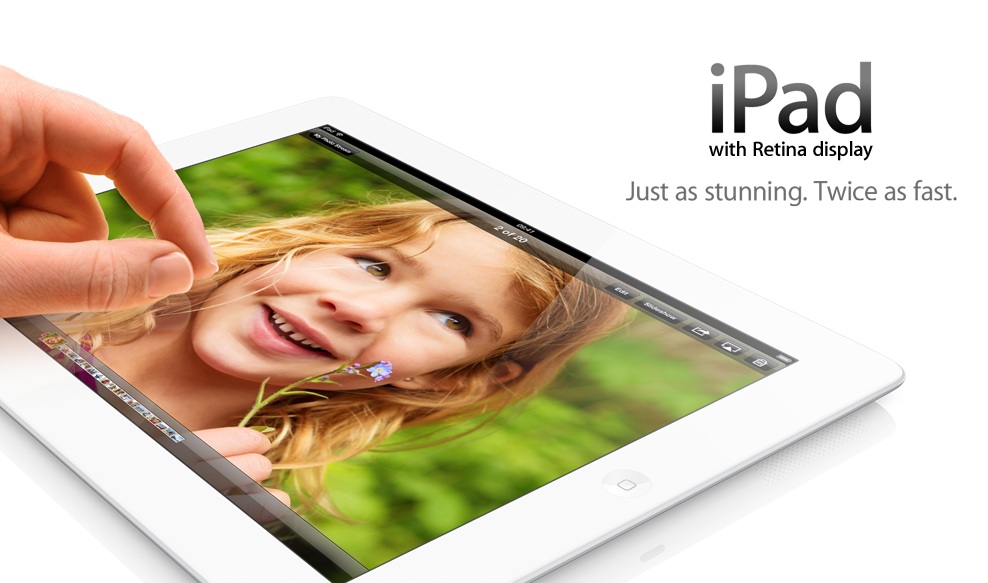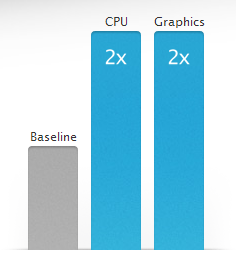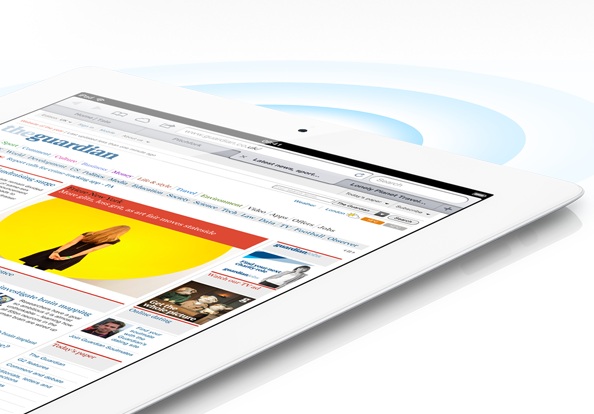iPad 3 Vs. iPad 4. What's Changed Exactly?

Last night must have been a bit of a blur for Apple fans the world over. Not only did Tim Cook and co. take to the stage to unveil the long-mooted iPad Mini, but the company revealed new upgrades to the iMac (calling it “the most beautiful iMac we have ever made”), Mac Mini and lifted the curtains on a 13-inch ‘Retina’ MacBook Pro. But there was yet one more announcement, and that was for the iPad 4.
Coming just seven months down the line since the Cupertino-based company showed off its Retina Display-flaunting ‘new iPad’ (or iPad 3), the reveal of a fourth generation full-sized iPad was one that came, admittedly, as a bit of a shock. The introduction of an iPad Mini makes a whole lot of sense – Google and Amazon will both be looking over their respective shoulders as we speak – but a brand-new iPad? Perhaps not. Ever get the feeling Apple is beginning to rush its products? Here’s how the iPad 4 compares to the iPad 3…
The ‘Retina Display’
Given the fact the third generation of the iPad, too, came sporting the gorgeous Retina Display, it came as a bit of a surprise to see so much energy poured into bigging-up the notoriously-gorgeous new screen standard of the full-sized iPad range. But that’s not to say the iPad 4’s display is old-hat or anything, it’s still a remarkable piece of kit and one any iPad 4 owner will drool over for some time to come. What’s more, Apple still has the luxury in boasting the iPad's terrific range of Apps specifically-designed for the big screen – a significant portion of which have been optimised further still for the Retina on the iPad 3 and 4.
Processor, Performance, Power

Battery
That Retina Display and upping of processor power has to come at the cost of something, right? Perhaps not, as Apple still stands by the iPad 4’s battery lasts a solid 10 hours between charges, the same as the iPad 3.
4G LTE And Wi-Fi
Us UK folk got a bit of a bum deal when it came to 4G LTE compatibility with last generation's iPad. Apple's marketing didn't do any favours, of course, with some consumers in the US understandably frustrated that a product described as '4G compatible' only worked on a small band of the LTE spectrum, while the iPad 3 won't be 4G compatible ever for UK users. The iPad 4, meanwhile, will use the 1800Mhz frequency that Everything Everywhere is using to offer the UK's very-first 4G data plans. Pin this down as one of the main selling points of the new tablet.
Wi-Fi technology within the iPad has also be heavily upgraded within the shell of the 4, making this  particular incarnation “up to twice as fast” as any previous-generation iPad when it comes to surfing the net wirelessly. Not bad.
particular incarnation “up to twice as fast” as any previous-generation iPad when it comes to surfing the net wirelessly. Not bad.
Cameras
While the iPad 4 still uses the same 5-megapixel rear-facing iSight camera as seen in the third-generation iPad, it's the front-facing camera that this time round sees the upgrade. That means the fairly perfunctory 0.3-megapixel camera from the iPad 3 is replaced with a decent 1.2-megapixel HD camera. It's not a huge leap in hardware terms, nor is it a massive selling point either, but it's an upgrade that seems logical given the surge in popularity of Facetime.
Lightning Connector
As expected, Apple has ditched the 30-pin connector for the iPad 4, bringing the device in line with the most recent iPod range and iPhone 5 in boasting the “80% smaller”, “reversible” and purportedly more durable Lightning connector. 30-pin-to-Lightning adapters may not be cheap, but if recent claims are anything to go by, cheaper, more affordable third-party adapters could be just around the corner.
Overall Impressions
Upgrading and refreshing almost its entire product range within the last seven months isn't something you can just ignore. Where Apple launches once felt celebratory, exciting, innovative, recent appearances by the company have arguably fallen a little flat, and it's this slightly rushed feeling to product launches that seems to dampen some of the spectacle that previous Apple launches (the original iPad, the iPhone 4) seemed to conjure. The iPad 4 is still a terrific device nonetheless, and will be long after its release this November 2nd, but since when did every product have to be upgraded every few months?
Richard Birkett